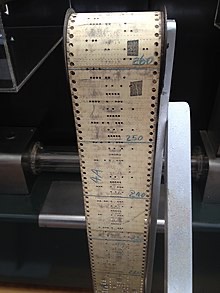
A program tape for the 1944 Harvard Mark I, one of the first digital computers. Note physical patches used to correct punched holes by covering them. Source: Wikipedia.
As most of you know, software or operating system patches are basically updates that address security vulnerabilities, such as fixing performance bugs or enhancing security features. (We previously talked about the importance of installing patches and updates as soon as they are released to prevent or mitigate ransomware in this post.)
While the term makes total sense to us now, we were curious why the specific word “patch” came into the vernacular. As it turns out, it goes back much further than we thought. In fact, the core idea originated in the early 1700s when holes punched in paper were used in weaving looms to more quickly create complex patterns in textiles.
In 1889, a mechanical engineer named Herman Hollerith expanded on the concept to create machine-readable paper punch cards and electronic counting machines which were used to conduct the national census in 1890. Based on that success, his machines were used in censuses for other countries and by the railroads to track fare information. Eventually, in 1924, Hollerith’s company became the International Business Machines Corporation (IBM).
And as they say, the rest is history. By 1937, IBM was manufacturing 10 million blank punch cards a day that were used in myriad business and governmental applications. In essence, a programmer would write code that a keypunch machine would convert into a pattern of small rectangular holes in 80 column by 12 row grids. Those cards would then be fed into a card-reading machine that would translate the holes into electronic signals within a computer.
With this many steps involved, it is not surprising that mistakes did occur occasionally. But rather than go through the time-consuming process of starting over, the error would be covered by thin paper tape, then re-punched with the accurate code when possible. These “patches” fixed a mistake or enhanced the previous coding, and the name stuck.
Now, the process of patching software is much easier and quicker, but the overall concept is the same. And this ends today’s computing history lesson.






